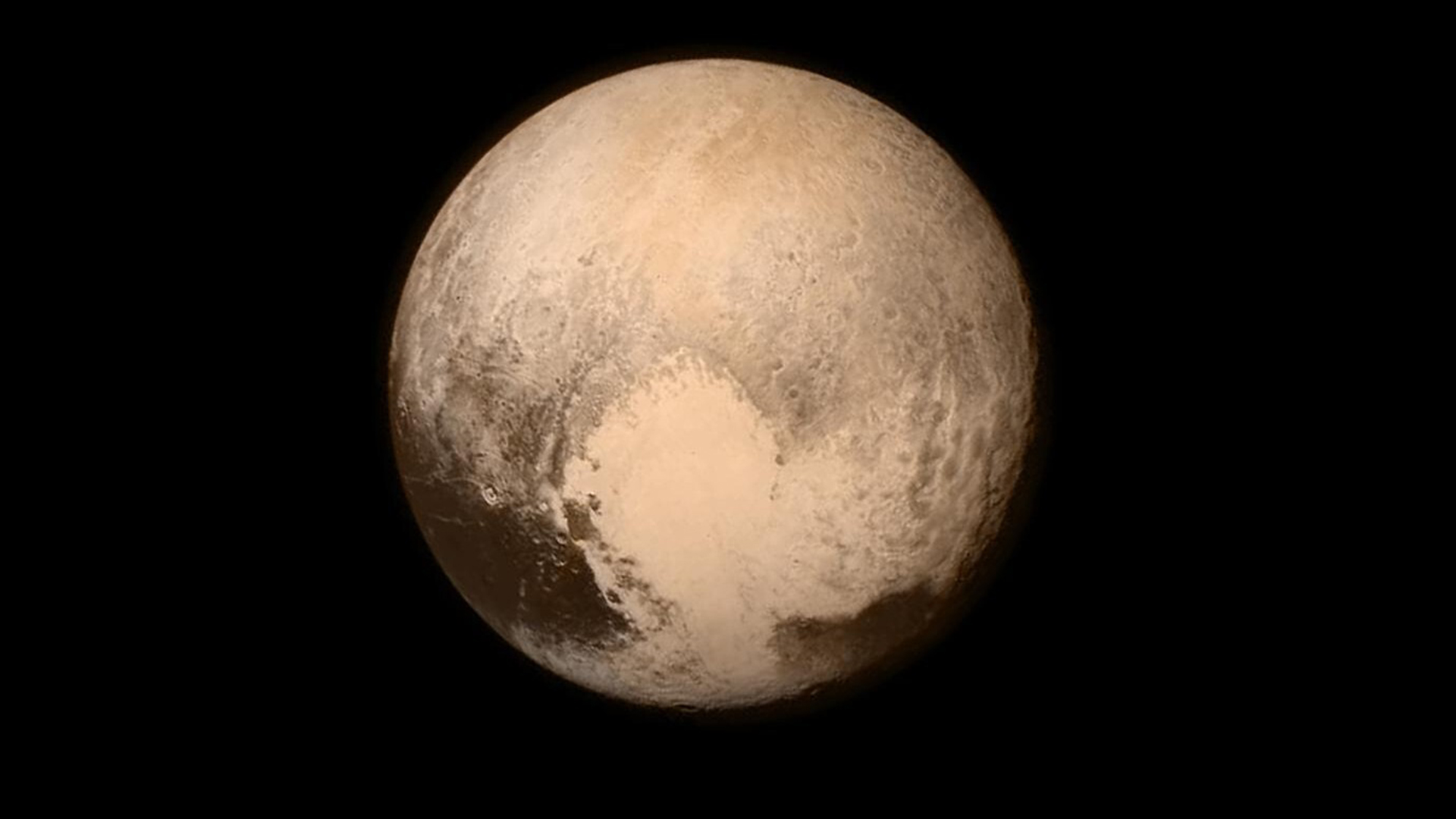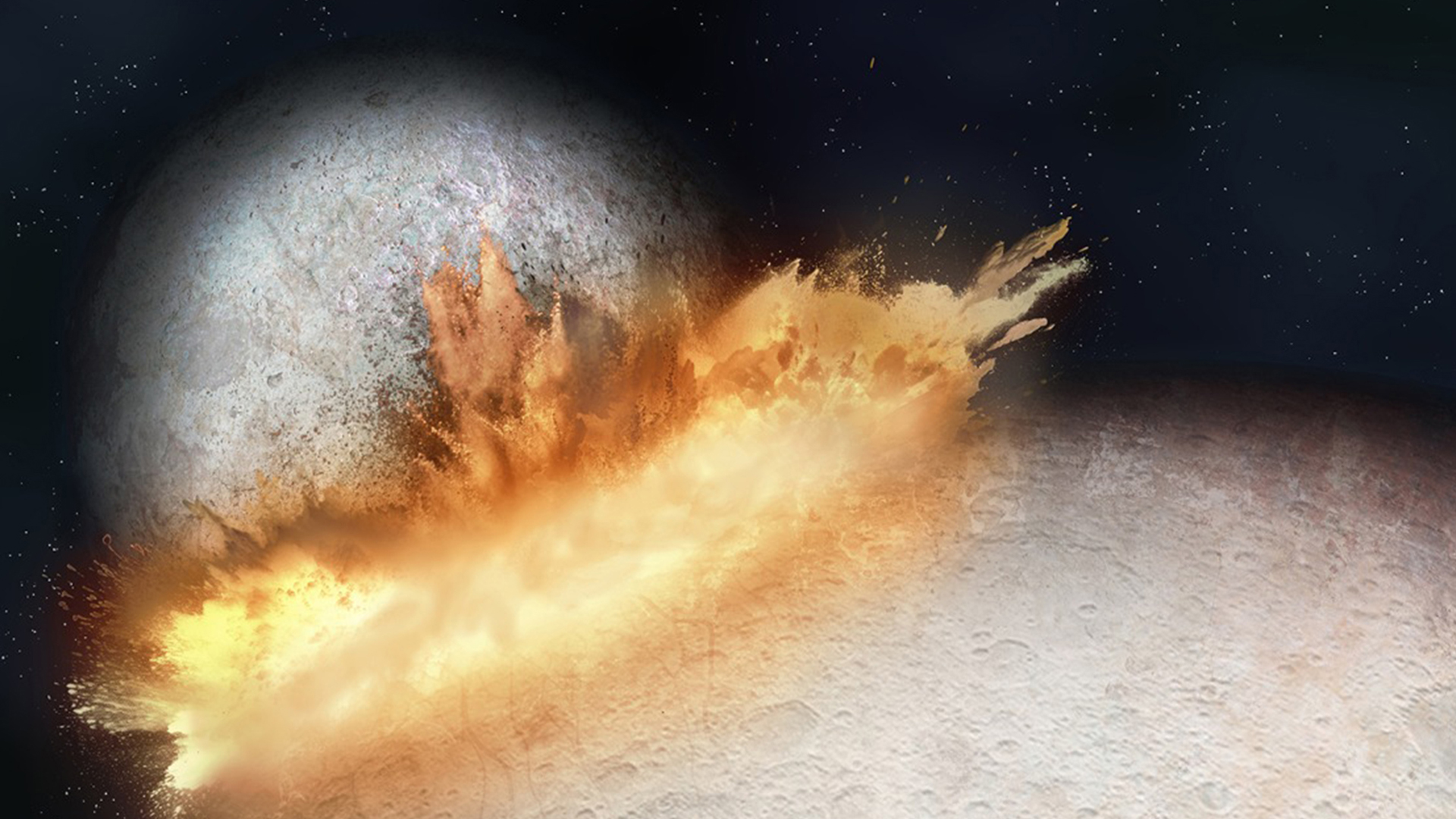
When NASA's New Horizons spacecraft flew by Pluto in 2015, it returned images with a sweet surprise: a heart-shaped formation dominating the surface of the dwarf planet.
Now, researchers believe they've uncovered the origin of this cosmic Valentine. The heart, they report today (April 15) in the journal Nature Astronomy, was formed in a slow-motion, glancing collision with an icy rock wider than Kansas is long.
The researchers determined this scenario by using computer models to simulate the impacts on Pluto's surface and the resulting formations. Pluto's heart, scientifically known as Tombaugh Regio, gets its light coloration from nitrogen ice. Impacts between icy bodies in the far reaches of the solar system aren't like those closer to the sun, said study co-author Erik Asphaug, a professor at the University of Arizona's Lunar and Planetary Laboratory.
"We are used to thinking of planetary collisions as incredibly intense events where you can ignore the details except for things like energy, momentum and density," Asphaug said in a statement. But in the distant solar system, velocities are so much slower, and solid ice is strong, so you have to be much more precise in your calculations. That's where the fun starts."
Related: Uranus and Neptune aren't made of what we thought, new study hints
Led by Martin Jutzi, a senior researcher at the University of Bern in Switzerland, the team used a simulation method called smoothed particle hydrodynamics to test various angles of collision and sizes of impactors to learn which dynamics would lead to the formation of Sputnik Planitia, the western portion of Pluto's heart. This roughly 800-square-mile (2,000 square kilometers) region sits about 2.5 miles (4 km) lower than its surroundings.

The team found that the formation probably originated from an oblique collision, leading to its elongated shape. This likely happened early in Pluto's history.
The icy rock that hit Pluto was probably around 454 miles (730 km) in diameter, the study authors said. Because of Pluto's icy core, the impact did not melt and liquefy portions of the planet as might happen in an impact in warmer climes, allowing the impacting body to sink into the planet's core.
Instead, the impactor likely flattened on Pluto's surface. Even now, it may sit just under the smooth nitrogen ice that covers Sputnik Planitia.
"Somewhere beneath Sputnik is the remnant core of another massive body that Pluto never quite digested," Asphaug said.
The simulations further suggest that Pluto does not hold a subsurface ocean under its icy outer layers, the researchers reported. Because Pluto's heart has a lower mass than the rest of the dwarf planet's surface, it should have gradually migrated toward the pole as Pluto rotated over millennia. But the formation is near the planet's equator — an odd position researchers had previously theorized might be due to the dynamics of a huge body of subsurface liquid water.
The new research suggests that a liquid ocean isn't necessary to explain the placement of Pluto's heart, Jutzi said in the statement.
"In our simulations, all of Pluto's primordial mantle is excavated by the impact, and as the impactor's core material splats onto Pluto's core, it creates a local mass excess that can explain the migration toward the equator without a subsurface ocean, or at most a very thin one," Jutzi said.







